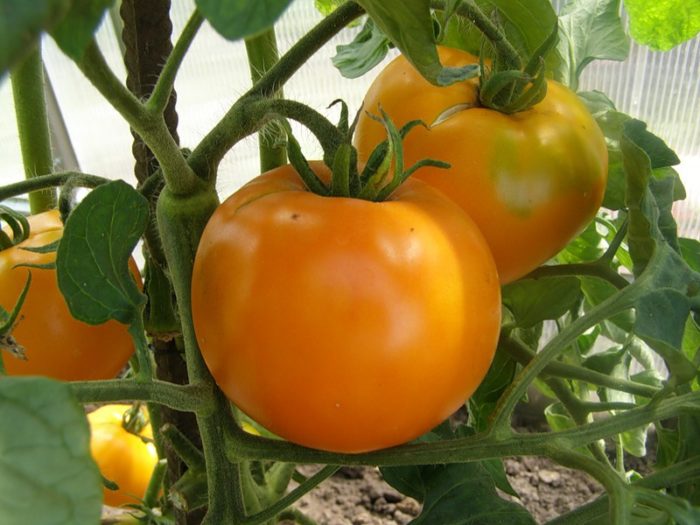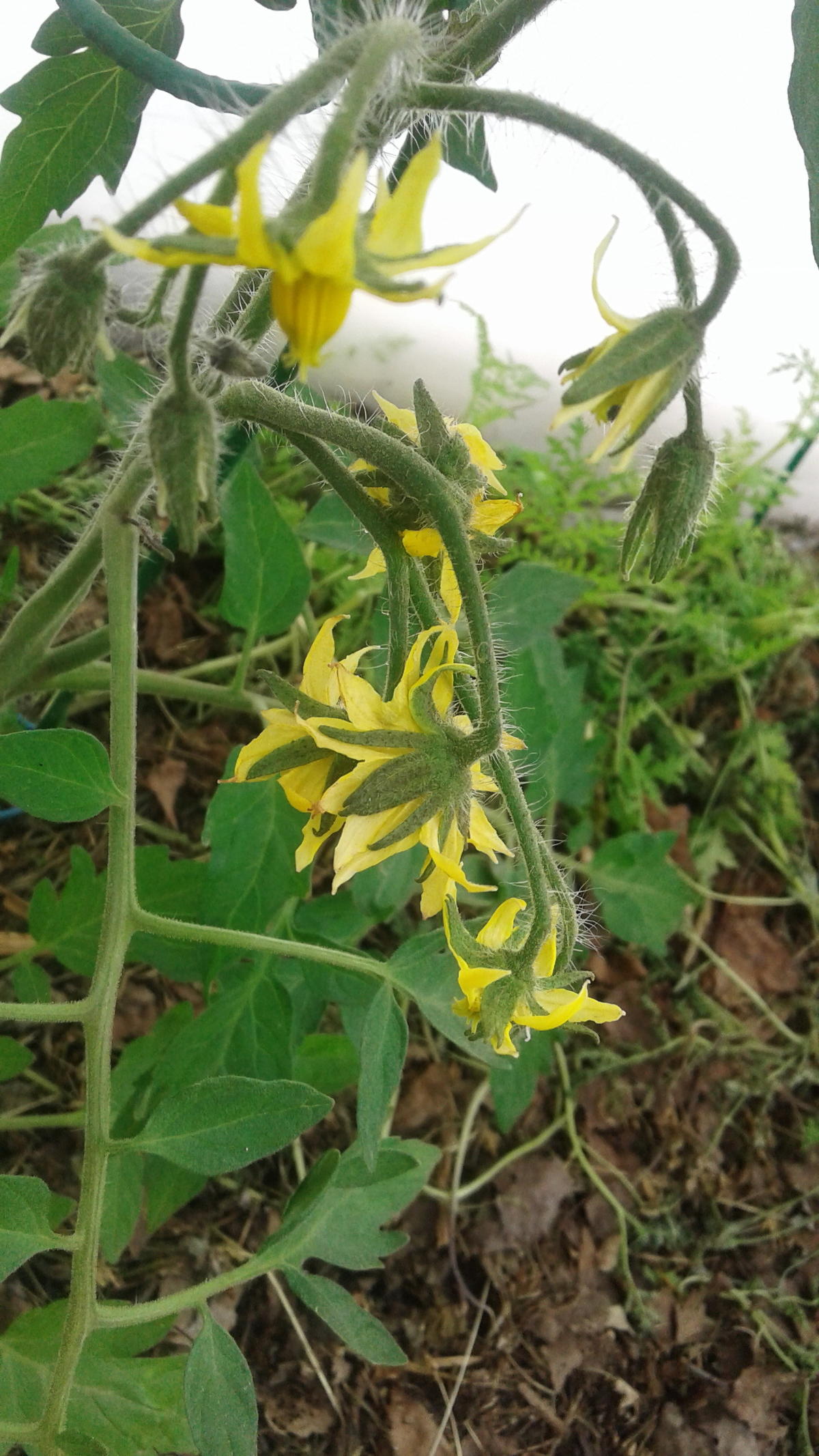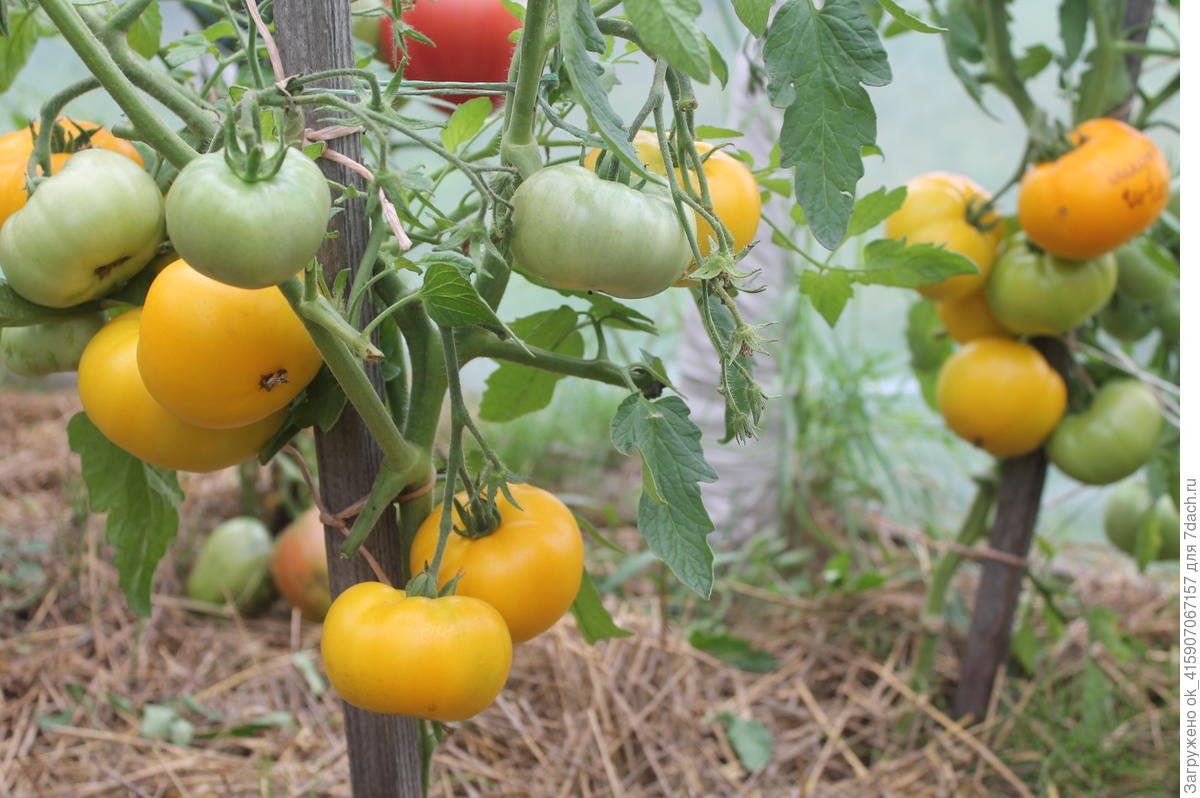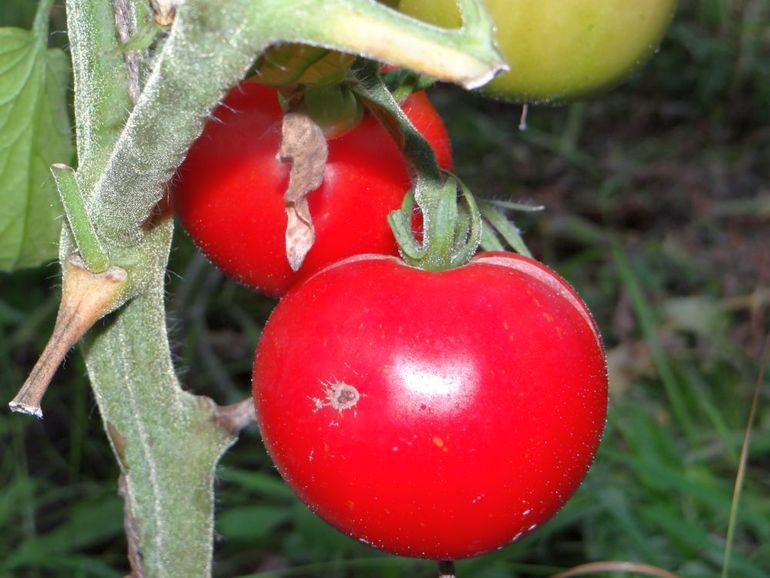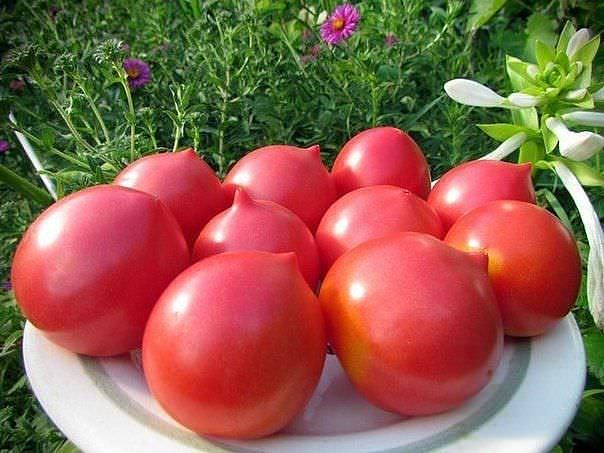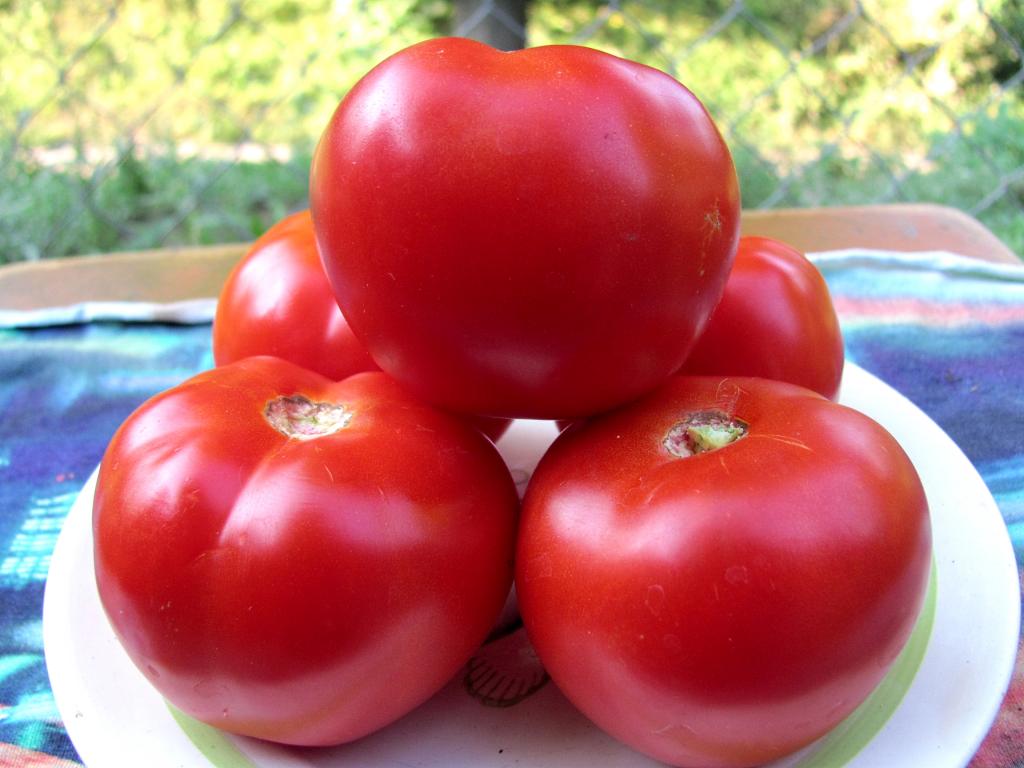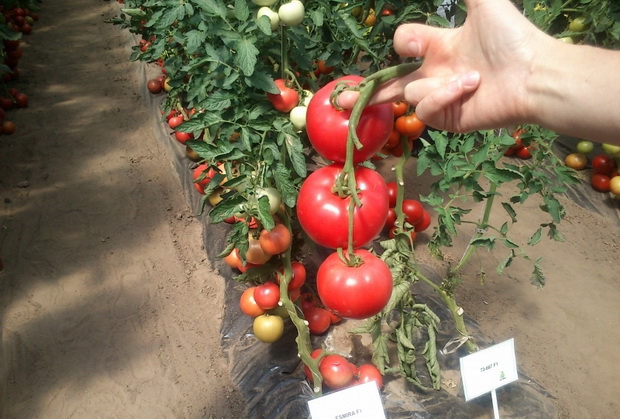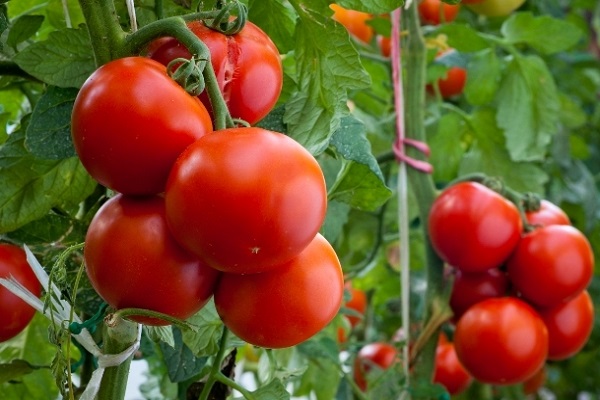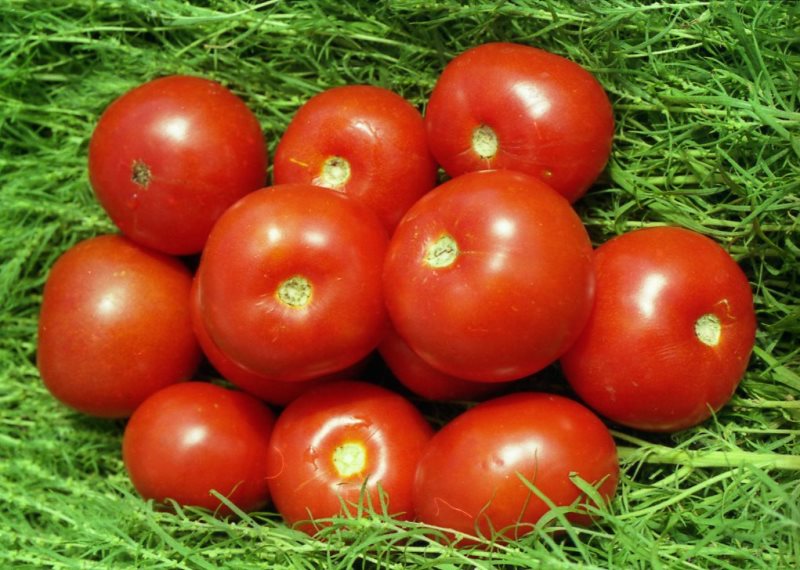Content:
Tomatoes of the Honey Giant variety are named so for a reason, the name directly reflects the physical parameters of the plant. The variety is the development of domestic breeders. Massively distributed since 2001, gardeners often call him the Giant.
Tomato Honey giant: characteristics and description of the variety
The height of an adult bush can reach 1.5 m, so it needs good, strong support. Leaves are medium in size, evenly distributed over the main and secondary stem. The branches are strong, capable of withstanding heavy loads.
The main distinguishing feature of the variety is the size of the fruit. With proper care, it can reach a weight of 400 g to 1 kg.
Due to the strong stress on the stems, they must be carefully tied up as they grow.
The variety belongs to the mid-season. Flowering begins in late May - early June. Under good conditions, the first crop can be harvested within 110 days after planting. As a rule, by this time, bright orange vegetables appear on the branches. The skin is strong and resistant to cracking.
Inside, the vegetable is fleshy, it consists of 6 dense chambers filled with juice and seeds. The fruits are well stored, their taste is rich, there is a slight honey aftertaste.
These vegetables are most suitable for fresh consumption. They can be used as an ingredient in fresh summer salads.
The plant is very prolific. From two to three individuals, up to 15 kg of fruit can be harvested. Therefore, when landing, you need to carefully calculate your capabilities, because you will have to eat tomatoes only fresh, you will not be able to stock them for use for the winter.
Growing technology
Features of growing tomato Honey giant mainly consist in providing a balanced temperature regime and forming a support for the branches. It is worth adhering to the following rules:
- Sprouts should be planted only after the threat of cold weather has receded, preferably in a greenhouse.
- To preserve the root system from temperature extremes, mulch the soil with straw.
- It is better to choose manure as organic fertilizers, and phosphorus and potassium as minerals.
- The stems, which have reached one and a half meters, are pinched, the stepsons are removed, leaving only a few of the strongest in the upper part.
- When the fruit ripens, most of the leaves are removed in order to at least slightly reduce the load on the stems.
- Supports are additionally installed under the branches with the harvest.
- Water the plant in the same way as other varieties of tomatoes: 2-3 times a week, from 3 to 10 liters, depending on the weather and the size of the bush.
Advantages and disadvantages
The strongest side of the variety is its high yield. There are other benefits too:
- immune to most diseases and pests characteristic of other members of the species,
- bright and appetizing fruit color,
- taste of fruits,
- long shelf life of fresh crops.
Along with the indicated advantages, such tomatoes have a number of disadvantages:
- does not tolerate low temperatures,
- requires frequent fertilization,
- a mandatory strong garter is required,
- impossible to save for the winter.
Like any plant, this variety has certain advantages and disadvantages. Whether to grow it on your site is a matter of taste.
